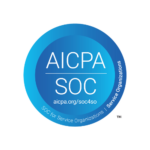Determining your healthcare development strategy can be complex and challenging, and it’s therefore vital to establish a process in order to improve the quality and efficiency of your interactions with a prospect. Every week, we’ll cover a new phase in our program to becoming a top producer in healthcare philanthropy.
Our key steps refer to the process development officers go through when interacting with each prospect. These steps are intended to be used as a guide to improve the quality and efficiency of every interaction with a prospect or donor. While some may move more quickly or slowly than others, all prospects go through each of the steps in the process. By being prepared and utilizing these steps, development officers can effectively reduce any tension between the officer and the prospect, sharpen communication skills, and generate a sense of professionalism and confidence. In the following blog series, Tips to Becoming a Top Producer in Healthcare Philanthropy, we will touch briefly on each of the key stages in the Gobel Group program, including pre-visit checklists and suggestions for talking points during each interaction, in order to assist development officers in aligning their prospects to the next stage, every time.
#6: Cultivating to Articulate the Case for Support
This is the point in your engagement where you’re prepared to elevate the conversation and begin making a case for support. You and your colleague (remember: a physician partner, or perhaps a volunteer) should present the information in a way that is less a pitch for a gift and more a substantive conversation regarding the opportunity to have an impact on the future.
You should always begin by summarizing what the prospect has already shared with you, thereby reassuring your prospect that you’ve been paying attention to them and their interests. This will give you the opportunity to bring your colleague into the conversation and begin the presentation of new information. (See the Resource link below for an example of how to approach this part of the engagement.)
After sharing this information, you should determine whether the prospect is prepared for the soft ask or if more cultivation is needed. If the former, you might ask the prospect whether they would be interested in beginning a conversation about making a gift in their preferred physician’s honor to support their work. If your prospect doesn’t accept your invitation, suggest that you go back to your institution to prepare a proposal with your colleague and set up another meeting.
If you believe the prospect is ready for the soft ask, you might say something like, “Jim, thank you for sharing with Dr. Jones and me your interest in Dr. Smith’s work. May I share our conversation today with Dr. Smith? Would you be open to beginning a conversation with us about making a gift in his honor and to support his work ?”
If your prospect accepts your invitation to begin the conversation, suggest that you go back to your institution, work with Dr. Smith to prepare a proposal, and agree on a time for your next meeting.
If your prospect doesn’t accept your invitation, you are likely to hear one of two objections:
- “I’m not interested.” Given the fact that you have by now determined their level of interest, this response is highly unlikely. If this happens to be the case, however, it’s important to now determine whether there is any chance to develop the prospects interest and take the necessary steps to align your prospect with that new development before you leave. If the prospect truly is disinterested, ask for an annual gift and move on to your next prospect.
- “I don’t have the money to make a large gift./This is not the best time for me.” First, ask your prospect whether they would consider supporting the initiative if it were a good time or if they did have the ability to donate.
- If they say “No,” attempt to find another opportunity to develop interest in another project. If there is no chance of this, ask for an annual gift and move on to your next prospect.
- If they say “Yes,” determine what it is that is holding the prospect back from making a gift. Ask them whether they’d consider a proposal that allowed for a way to both make a gift and meet their other responsibilities. If they respond with “No,” ask for an annual gift and move on to another prospect. If it’s a positive response, however, express your thanks, restate your intention to meet with your colleague to develop a proposal, and agree on a date and location for a next visit.
Remember: Even when the signals are positive at this point, you shouldn’t try to officially ask or close the gift immediately. It’s more important at this stage to prepare the prospect for the next visit when you will officially ask for their support.
Want to know more about becoming a top producer in healthcare philanthropy? Click here to read about the next stage, Making the Ask, or click here to read the previous stage, Cultivating to Identify Area of Interest.
